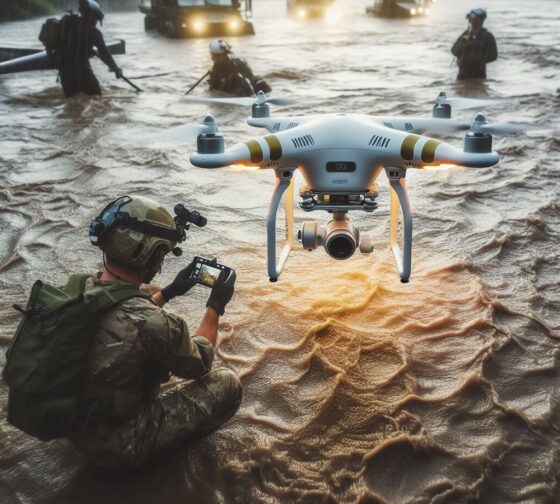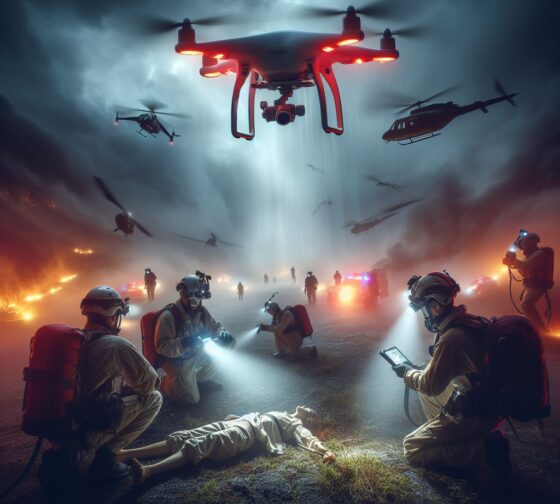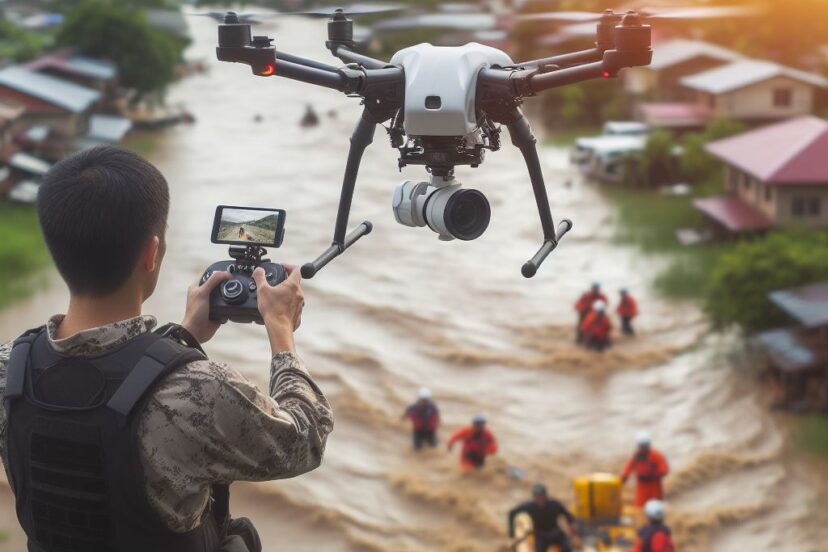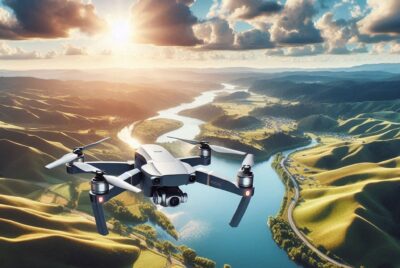Drone Search and Rescue: Transforming Rescues
*We may earn a commission for purchases made using our links. Please see our disclosure to learn more.
Drone Search and Rescue: Empowering Humanity in Critical Situations
Welcome to the frontier of modern emergency response – where the convergence of technology and compassion intersects. In the realm of search and rescue, drones emerge as transformative tools, transcending the boundaries of conventional methods. As an enthusiast deeply vested in the potential of drones and their pivotal role in critical situations, I invite you on a journey to explore the profound impact and limitless possibilities of drone-assisted search and rescue operations. Join me in uncovering how these aerial marvels revolutionize the very essence of saving lives.
Benefits of Drones in Search and Rescue Operations
When it comes to emergency situations, time is of the essence. Drones offer unparalleled benefits in expediting search and rescue missions due to their swift deployment capabilities. Their ability to access remote or hazardous areas quickly can make a crucial difference in saving lives.
Additionally, drones provide enhanced reach and accessibility, maneuvering through areas where traditional methods might struggle to access. This accessibility is pivotal in locating missing individuals or assessing disaster-stricken regions swiftly.
Moreover, the cost-effectiveness of drone deployment compared to manned aircraft or ground teams is remarkable. Their operational efficiency reduces expenses while maximizing outcomes.
Factors to Consider Before Using Drones in Search and Rescue
However, before integrating drones into search and rescue missions, several critical factors need consideration. Regulatory compliance, weather conditions, and technical capabilities play pivotal roles. Adhering to local regulations and obtaining necessary permissions is crucial to ensure lawful operations.
Furthermore, understanding weather limitations and ensuring that drones possess the necessary technical capabilities and undergo regular maintenance is imperative for successful missions.
Best Practices for Drone Search and Rescue Operations

To maximize the effectiveness of drone deployments, proper training and certification are essential for operators. Collaborative efforts with local authorities and emergency response teams can streamline operations and improve outcomes. Utilizing advanced features such as thermal imaging or GPS tracking enhances search capabilities.
Types of Drones Suited for Search and Rescue
Various types of drones are suitable for different search and rescue scenarios. Quadcopters offer maneuverability, while fixed-wing drones provide extended flight times. Hybrid models combine the advantages of both.
Here are my top three drone brands commonly utilized in search and rescue operations due to their reliability, features, and performance:
- DJI (Da-Jiang Innovations): Renowned for its high-quality drones equipped with advanced camera systems, stability in flight, and user-friendly interfaces, DJI drones such as the Matrice and Phantom series are frequently employed in search and rescue missions.
- Parrot: Parrot drones, especially the Anafi and Disco models, are known for their versatility, ease of use, and durability. With features like thermal imaging and robust design, Parrot drones are favored for their adaptability in various search and rescue scenarios.
- Yuneec: Yuneec drones like the Typhoon H series are recognized for their reliability, long flight times, and exceptional camera quality. These drones often feature obstacle avoidance systems and specialized payloads, making them suitable for search and rescue tasks.
These brands have established themselves as leaders in the industry, offering drones with cutting-edge technology and features tailored to meet the demanding requirements of search and rescue missions.
Key Features to Look for in Rescue Drones
When choosing drones for search and rescue operations, durability, camera quality, sensor capabilities, and payload capacity are crucial factors. Drones with high endurance, quality cameras, and sensors can significantly aid in locating and aiding victims.
Challenges and Limitations of Drone Search and Rescue
Despite their advantages, drones face challenges such as limited battery life, privacy concerns, and connectivity issues. Addressing these limitations through technological advancements and regulatory frameworks is imperative for widespread adoption.
Embracing Collaborative Efforts

Collaboration between drone enthusiasts, technology developers, regulatory bodies, and emergency response teams is crucial for the seamless integration of drones into search and rescue operations. Building strong partnerships fosters a deeper understanding of operational needs and technological advancements, leading to more effective strategies for utilizing drones in critical situations.
By working hand-in-hand, stakeholders can collectively address challenges, streamline protocols, and leverage the latest innovations, ensuring that drones play an increasingly pivotal role in saving lives.
Ethical Deployment and Responsible Use
The ethical deployment of drones in search and rescue operations is paramount. While these devices offer unprecedented advantages, their use must be guided by ethical considerations and a commitment to respecting individual privacy rights.
Adhering to strict ethical guidelines and privacy protocols ensures that the benefits of drones in rescue missions are maximized while mitigating any potential risks or intrusions. Responsible usage involves not only complying with legal regulations but also cultivating a culture of respect, transparency, and accountability in the deployment and operation of these technological marvels.
Conclusion
In the dynamic landscape of emergency response, drone technology stands out as a beacon of hope and efficiency. The remarkable capabilities showcased in search and rescue operations signify a transformative era in saving lives during critical situations.
As this technology continues to evolve, surmounting challenges and embracing innovations will further solidify drones as indispensable assets in the arsenal of emergency responders worldwide. The future holds immense promise for drones, steering us toward a safer and more responsive world in times of need.
FAQs on Drone Search and Rescue
Are drones legally allowed for search and rescue operations in all regions?
While many regions permit drone use in search and rescue, regulations vary. It’s essential to check and comply with local laws.
Can drones be operated in adverse weather conditions?
Some drones are designed to withstand adverse weather, but not all. It’s crucial to choose models suitable for specific weather conditions.
Do drones have night vision capabilities for search and rescue missions?
Certain drones are equipped with thermal imaging or night vision features, aiding operations during low-light conditions.
How long can a drone typically fly during a search and rescue mission?
Flight times vary based on drone type and battery capacity, with some models offering flight times of over 30 minutes.
Are there privacy concerns related to drones used in search and rescue?
Privacy concerns exist, and it’s vital to operate drones ethically and adhere to privacy regulations when conducting rescue operations.
As technology continues to advance, the integration of drones in search and rescue will undoubtedly evolve, potentially redefining the way we approach emergency response scenarios.




